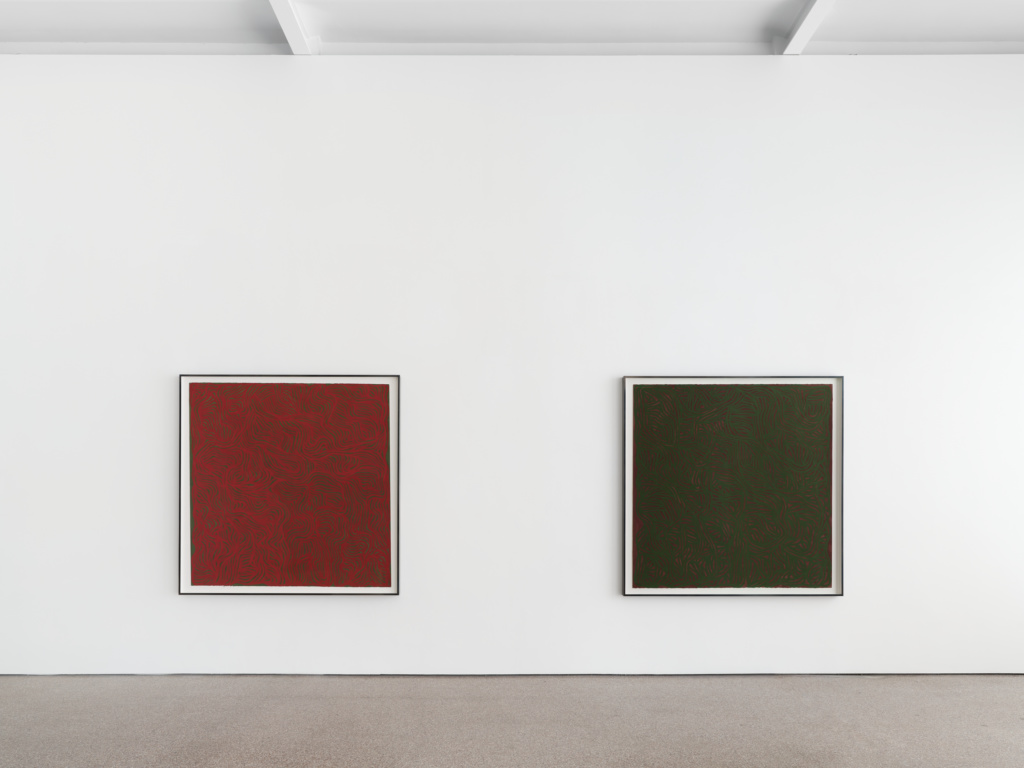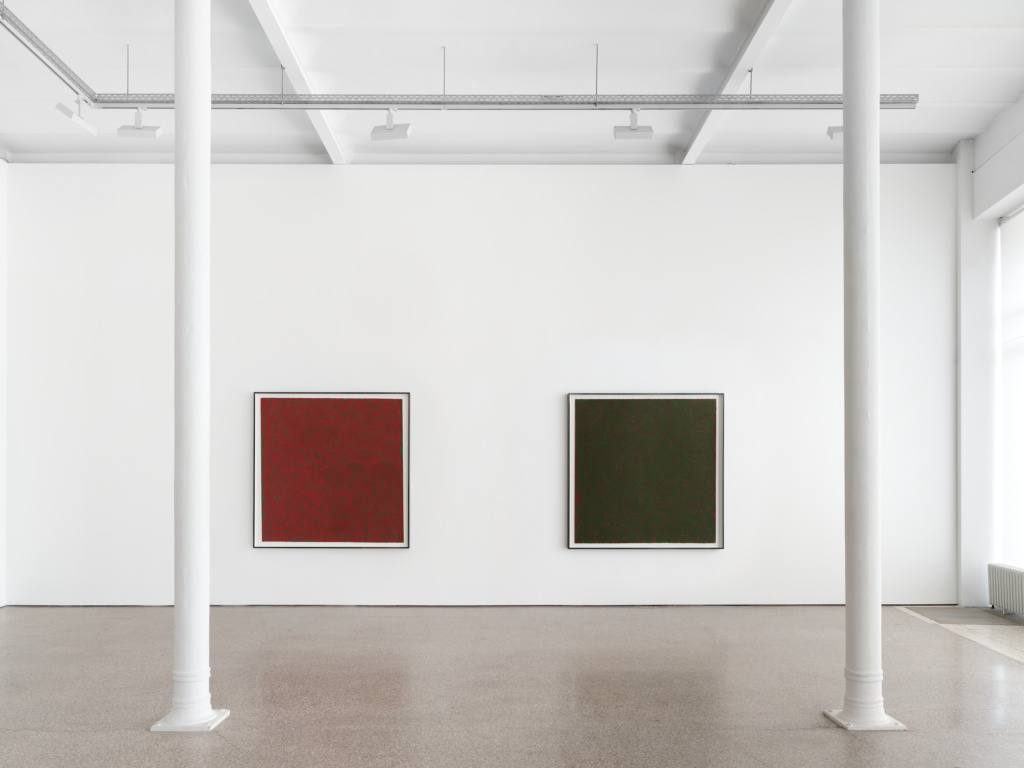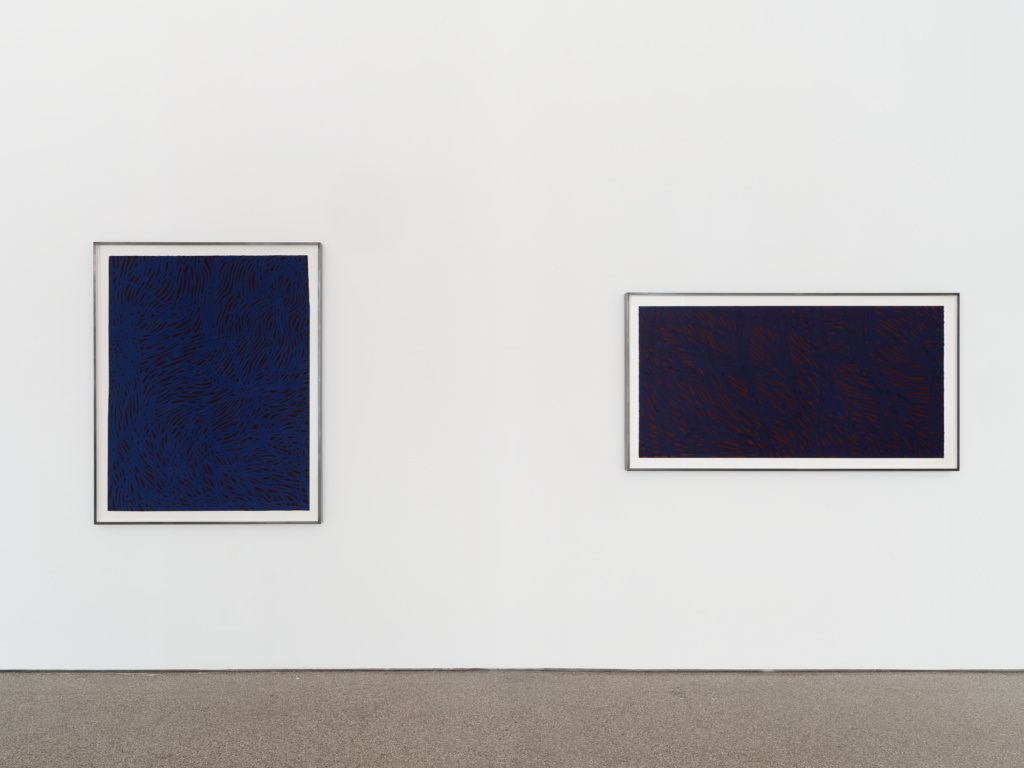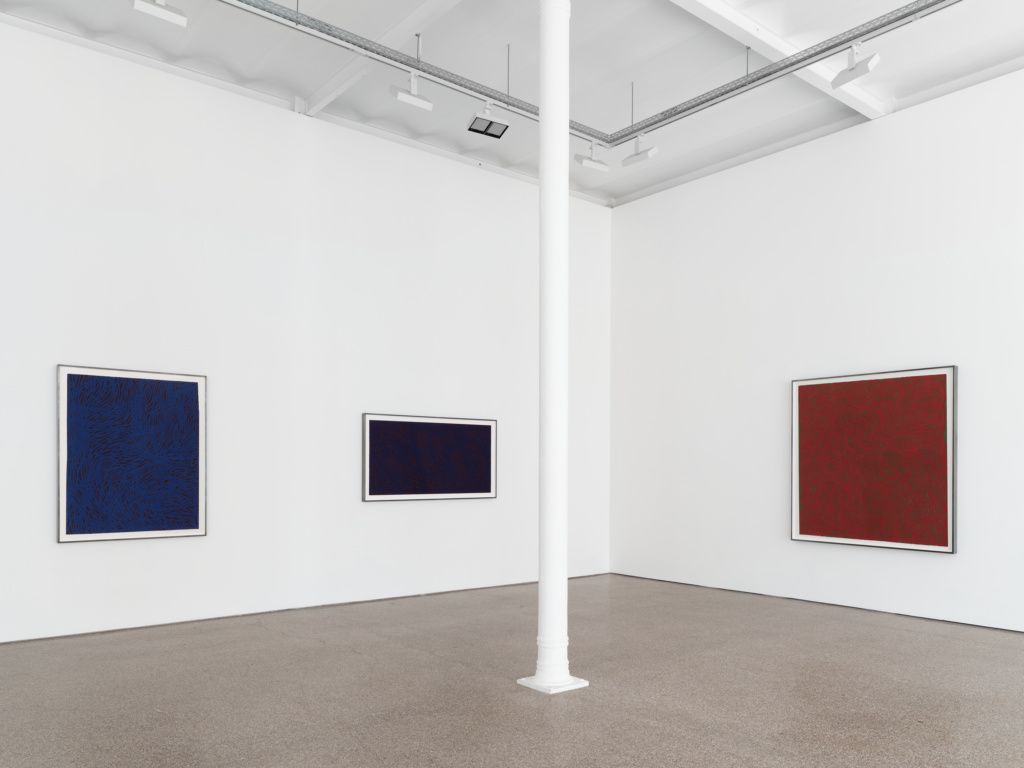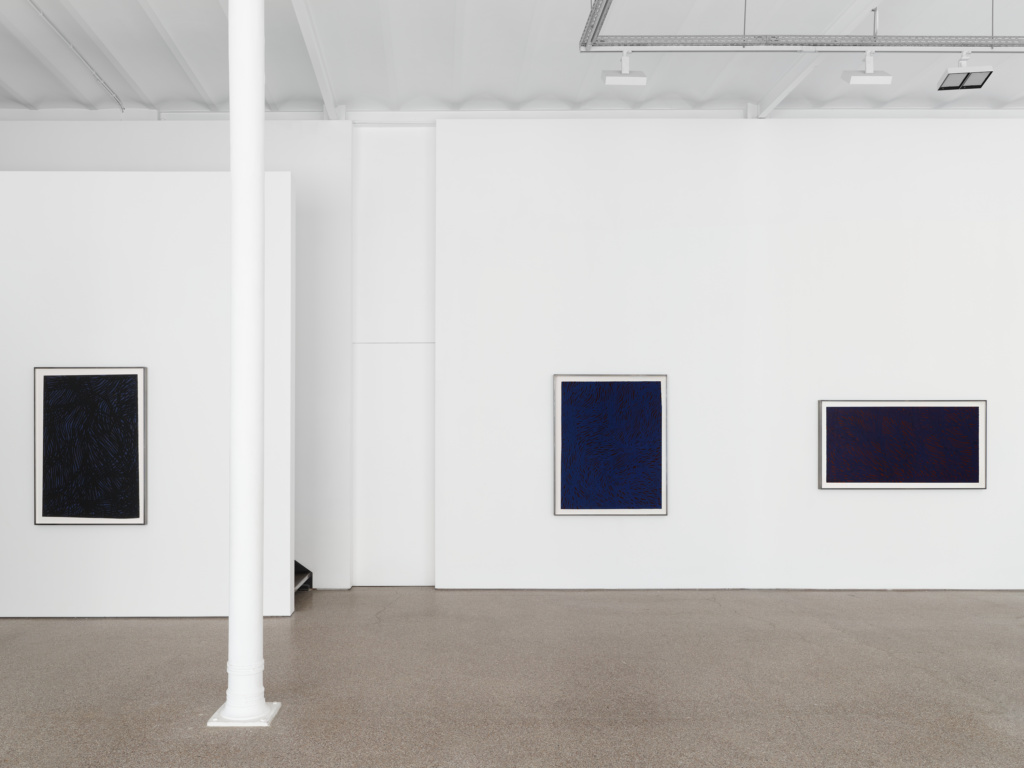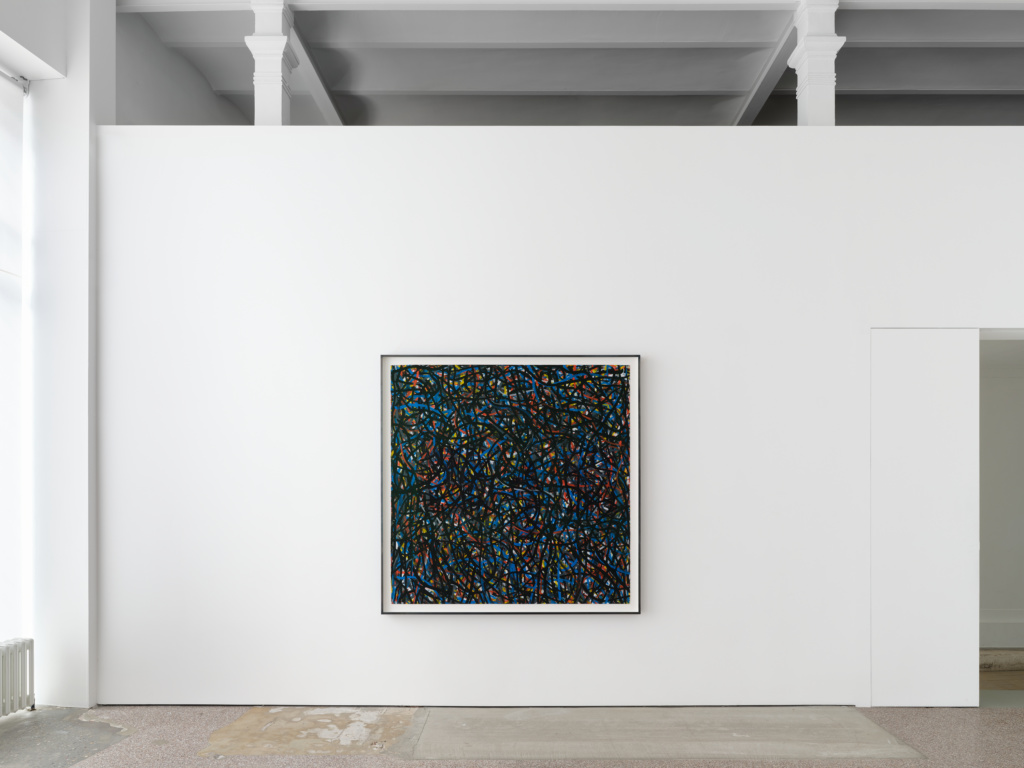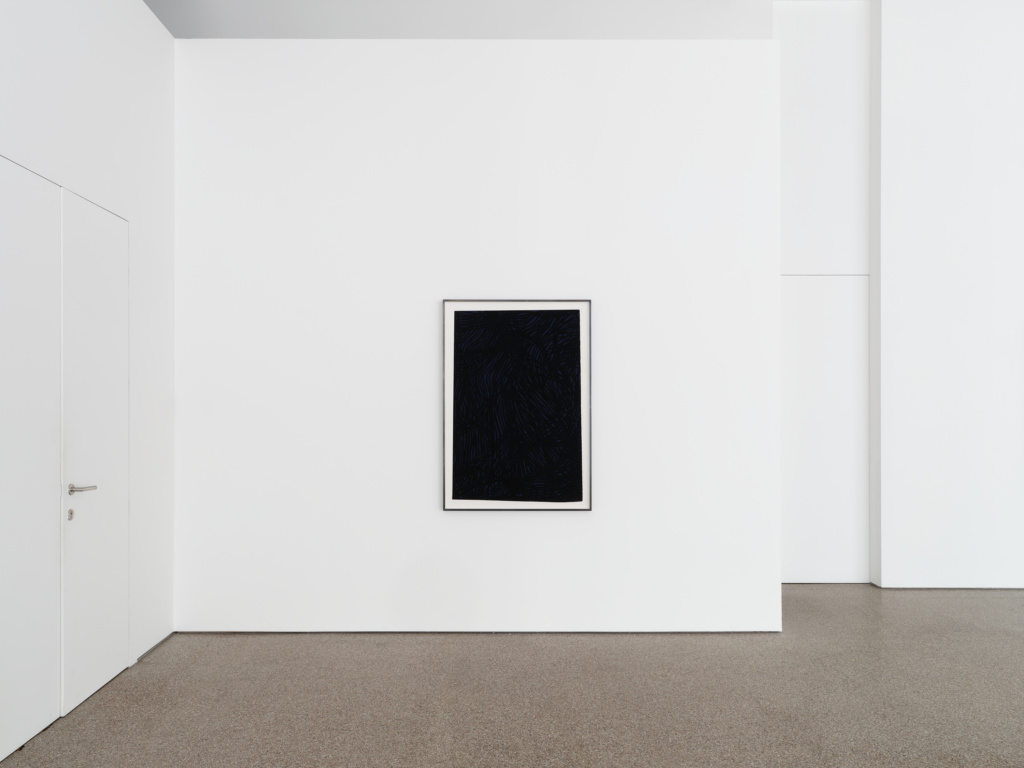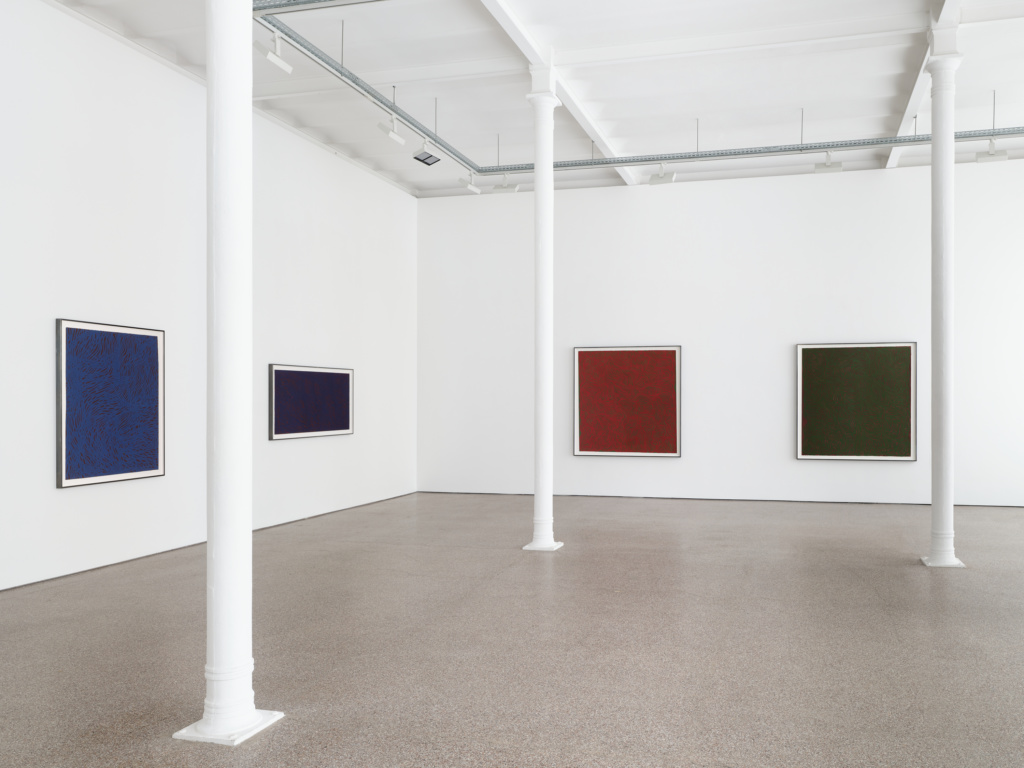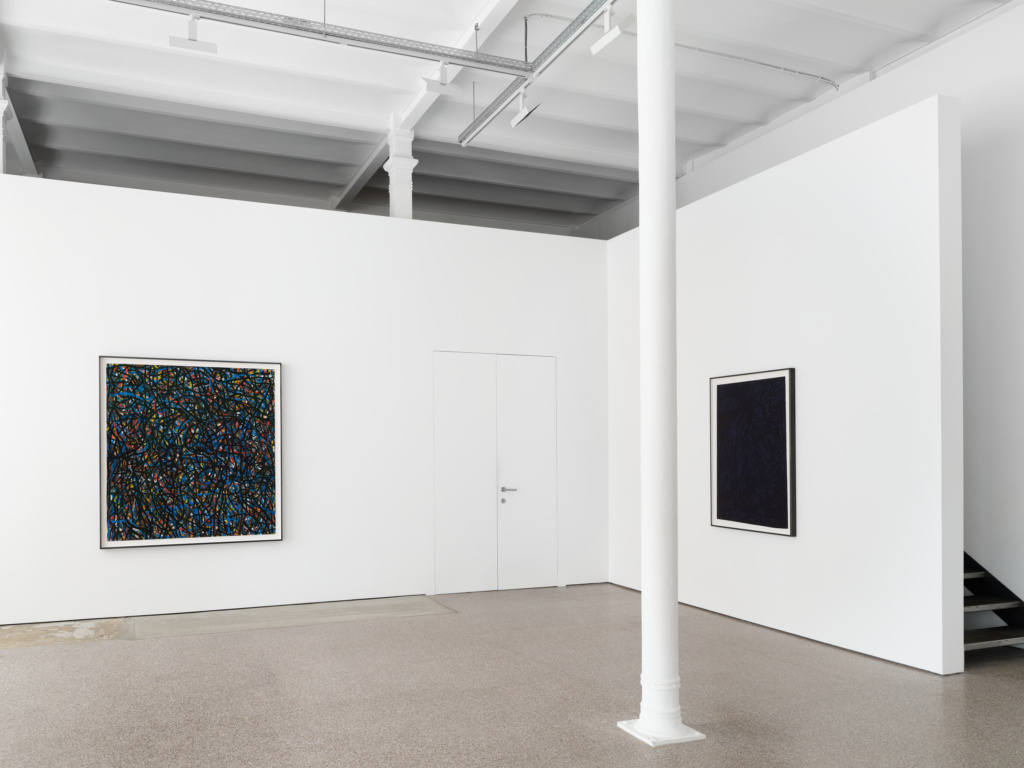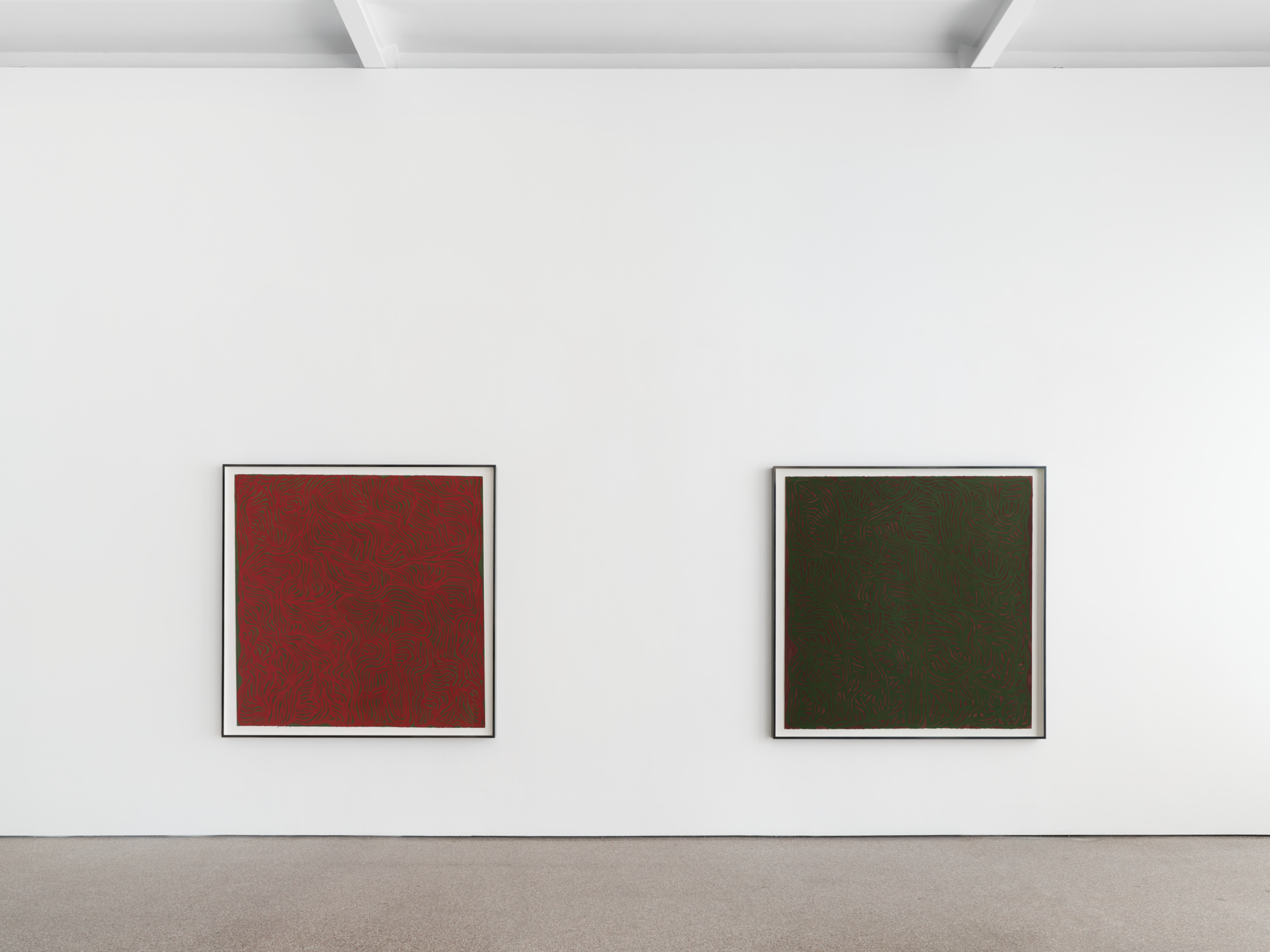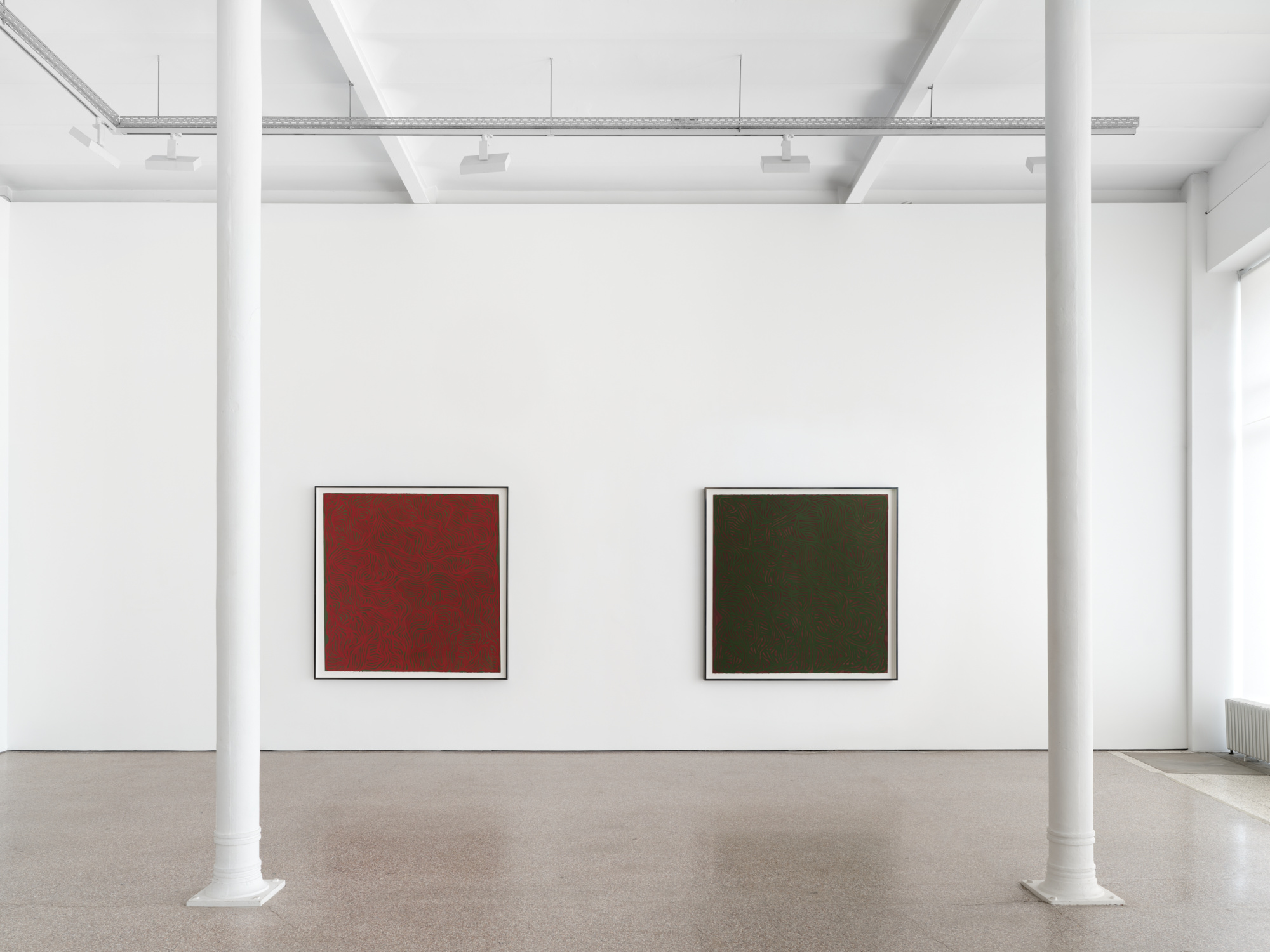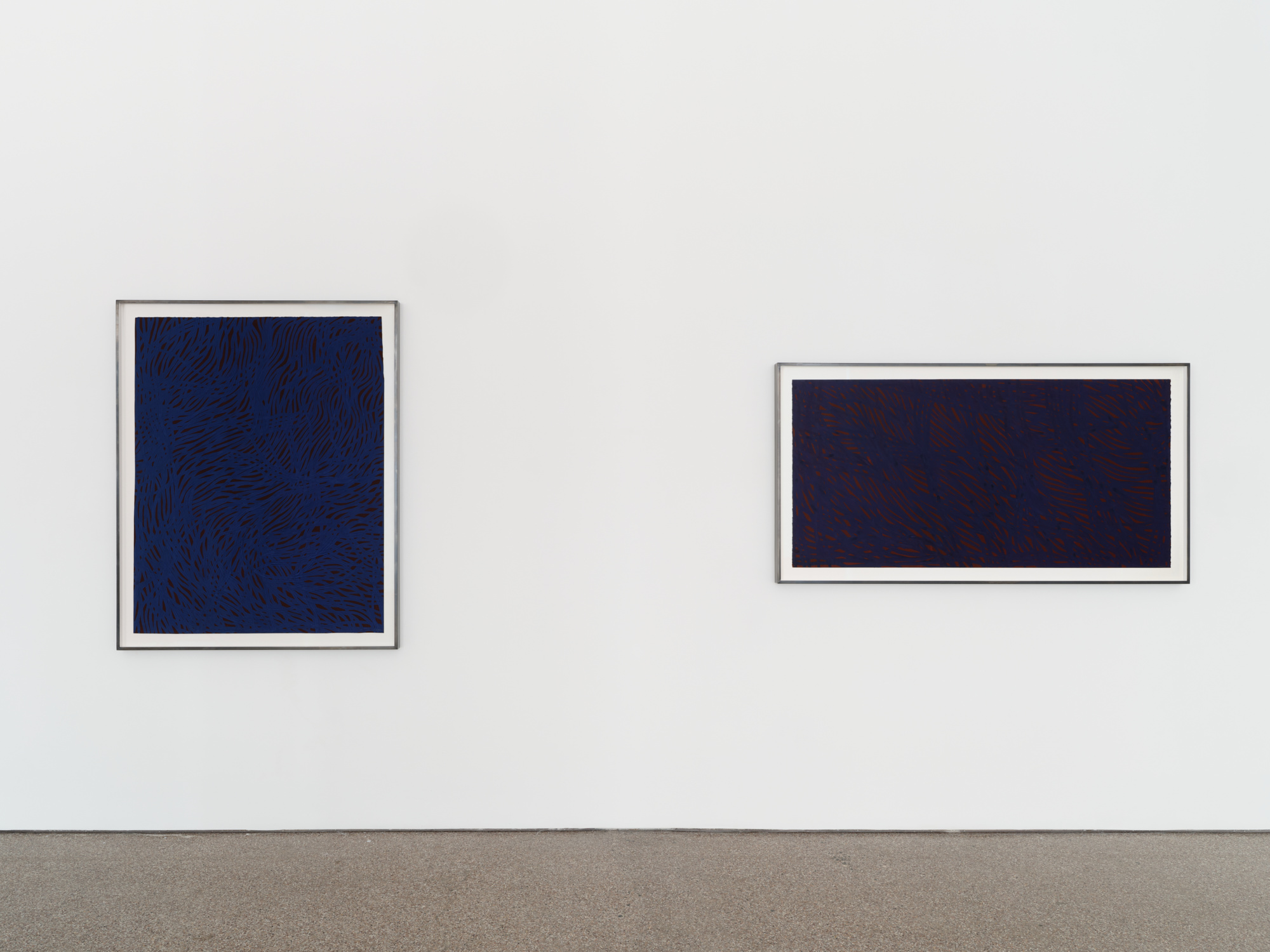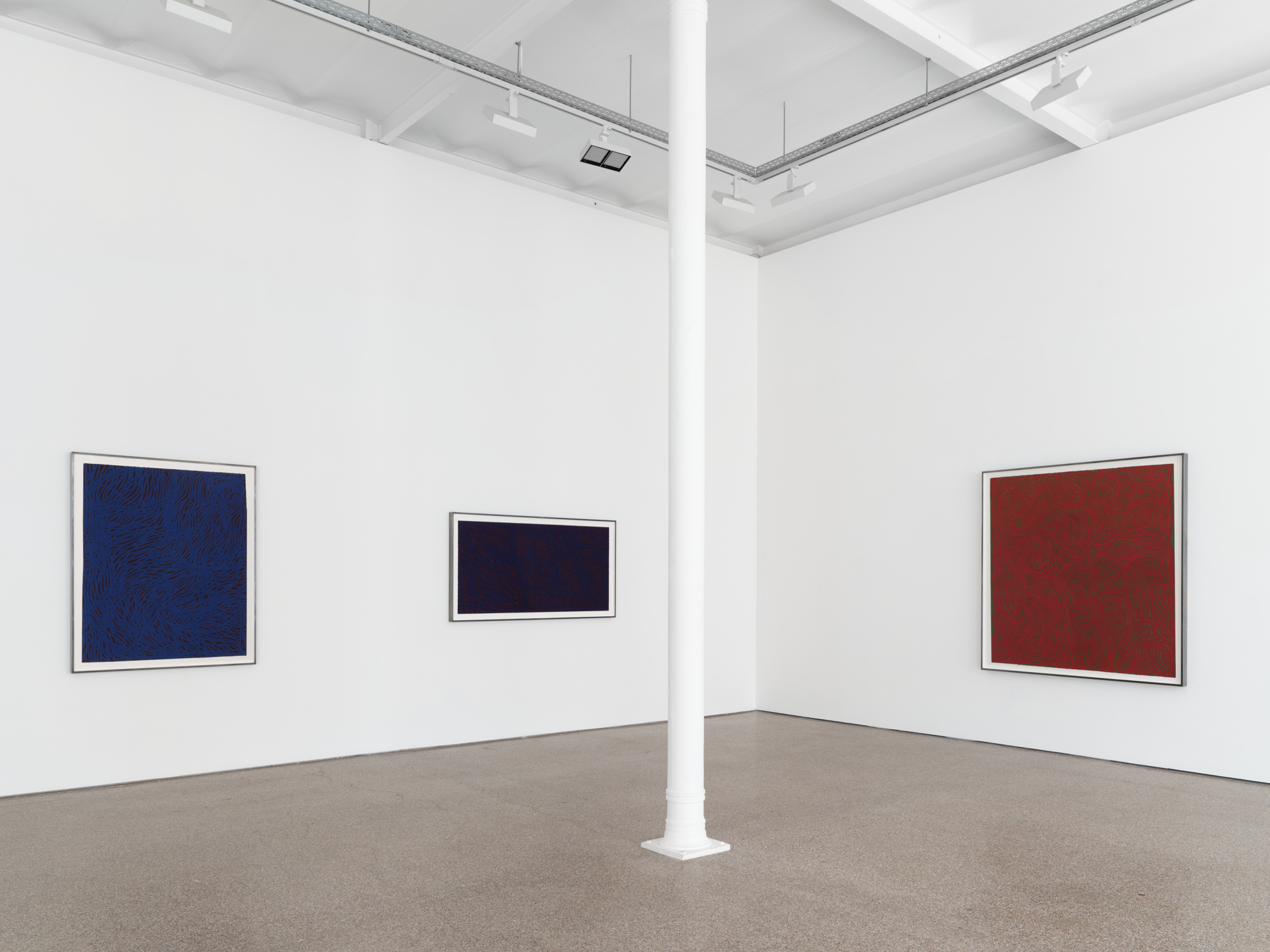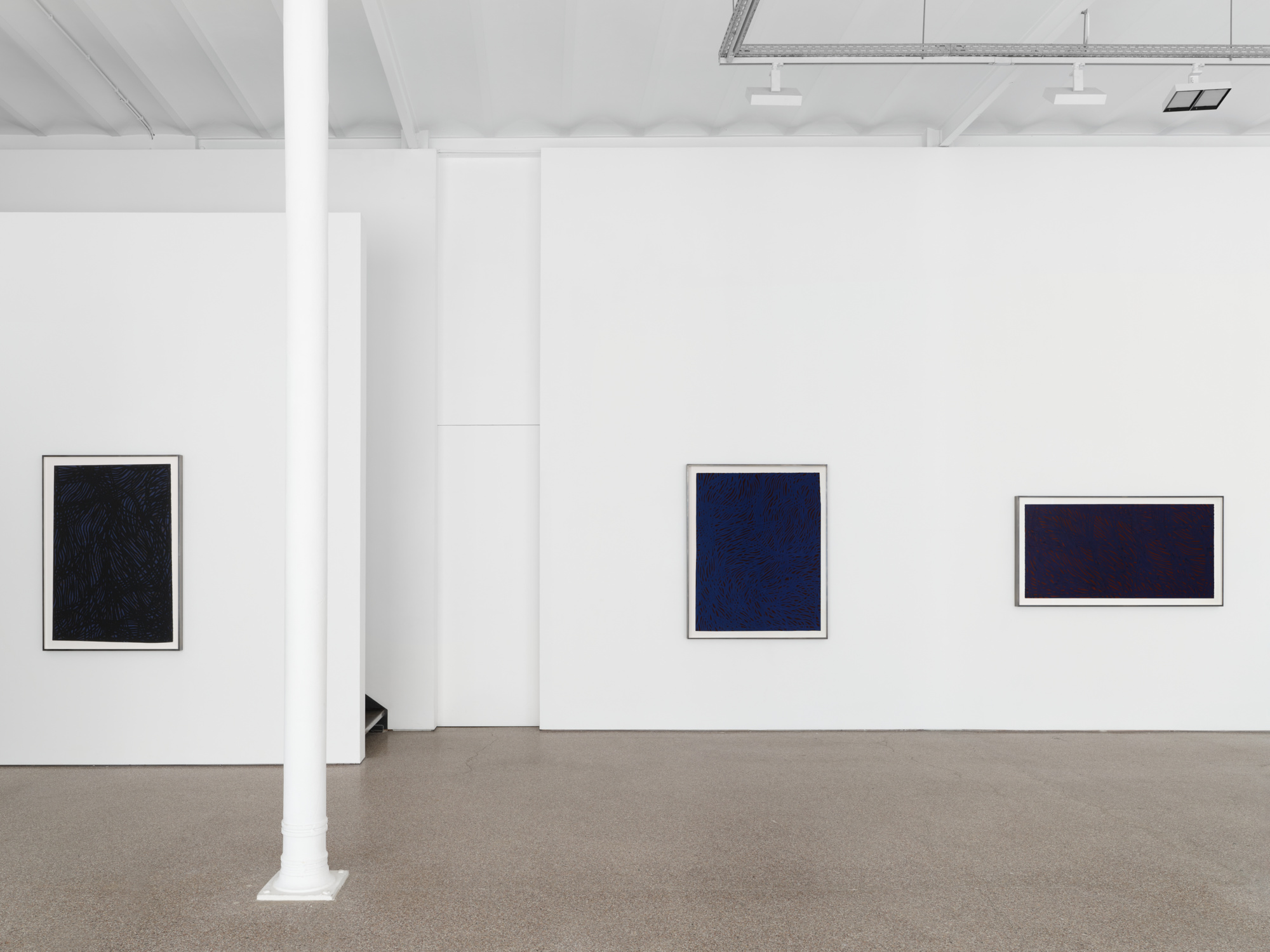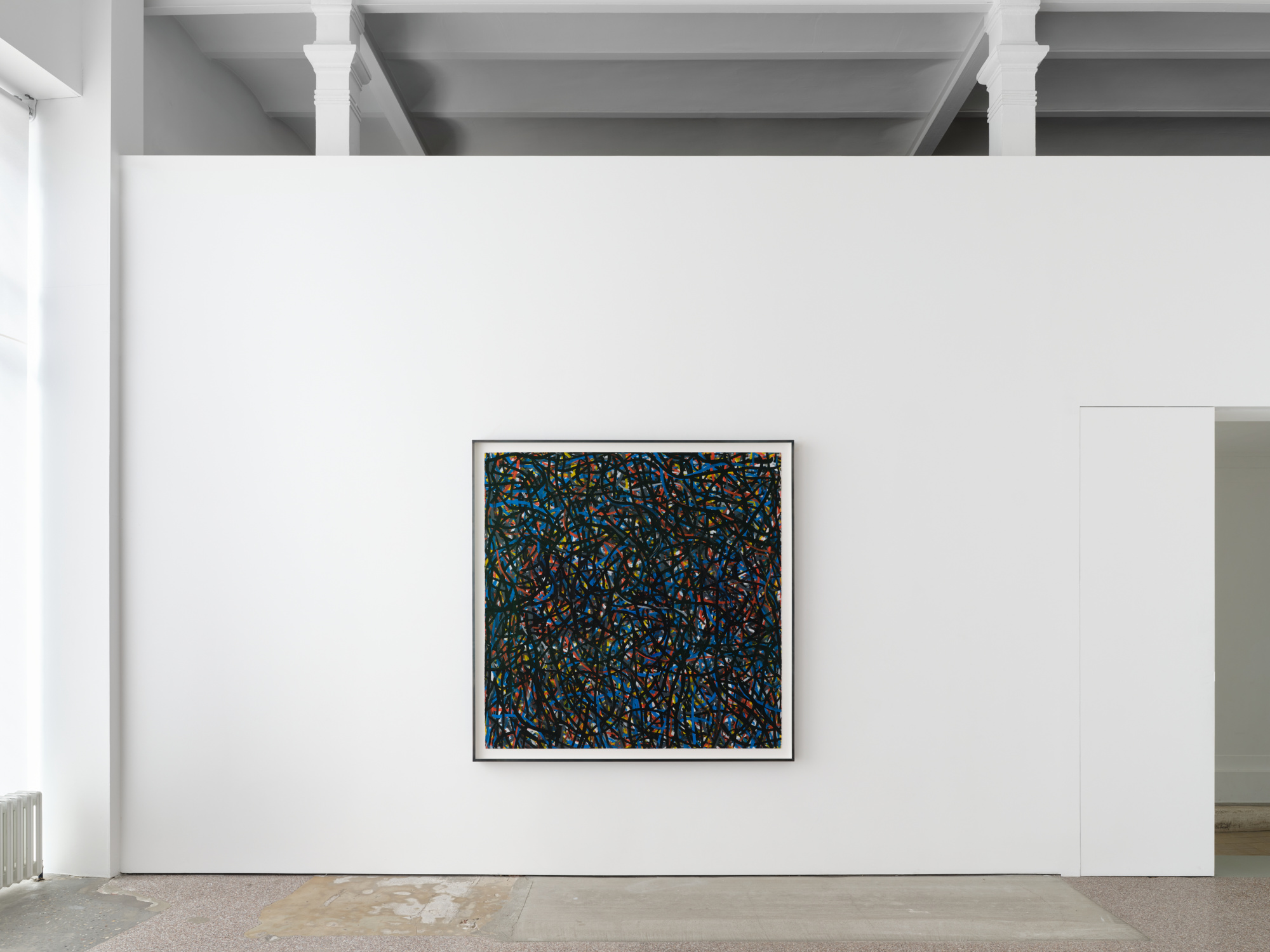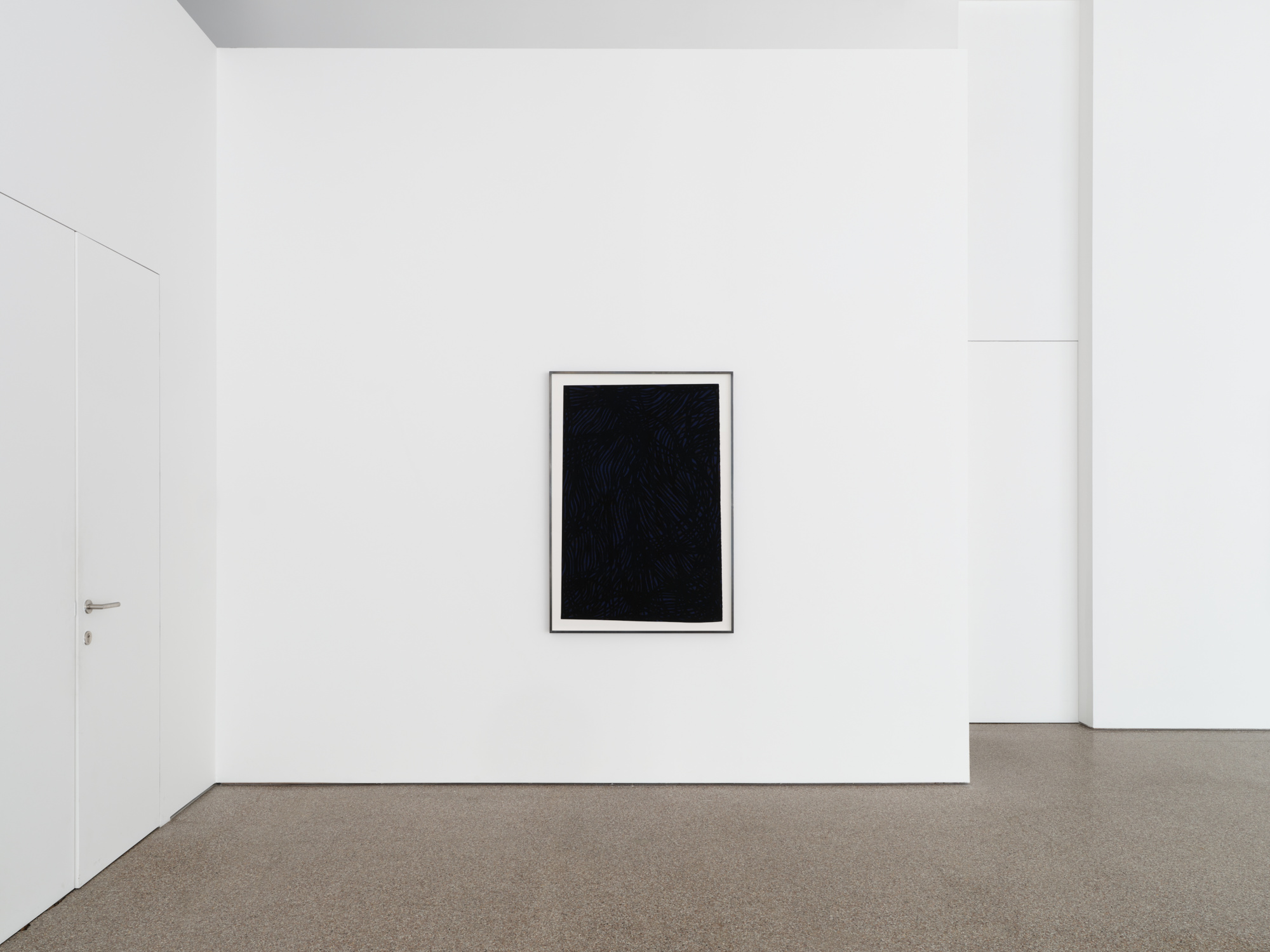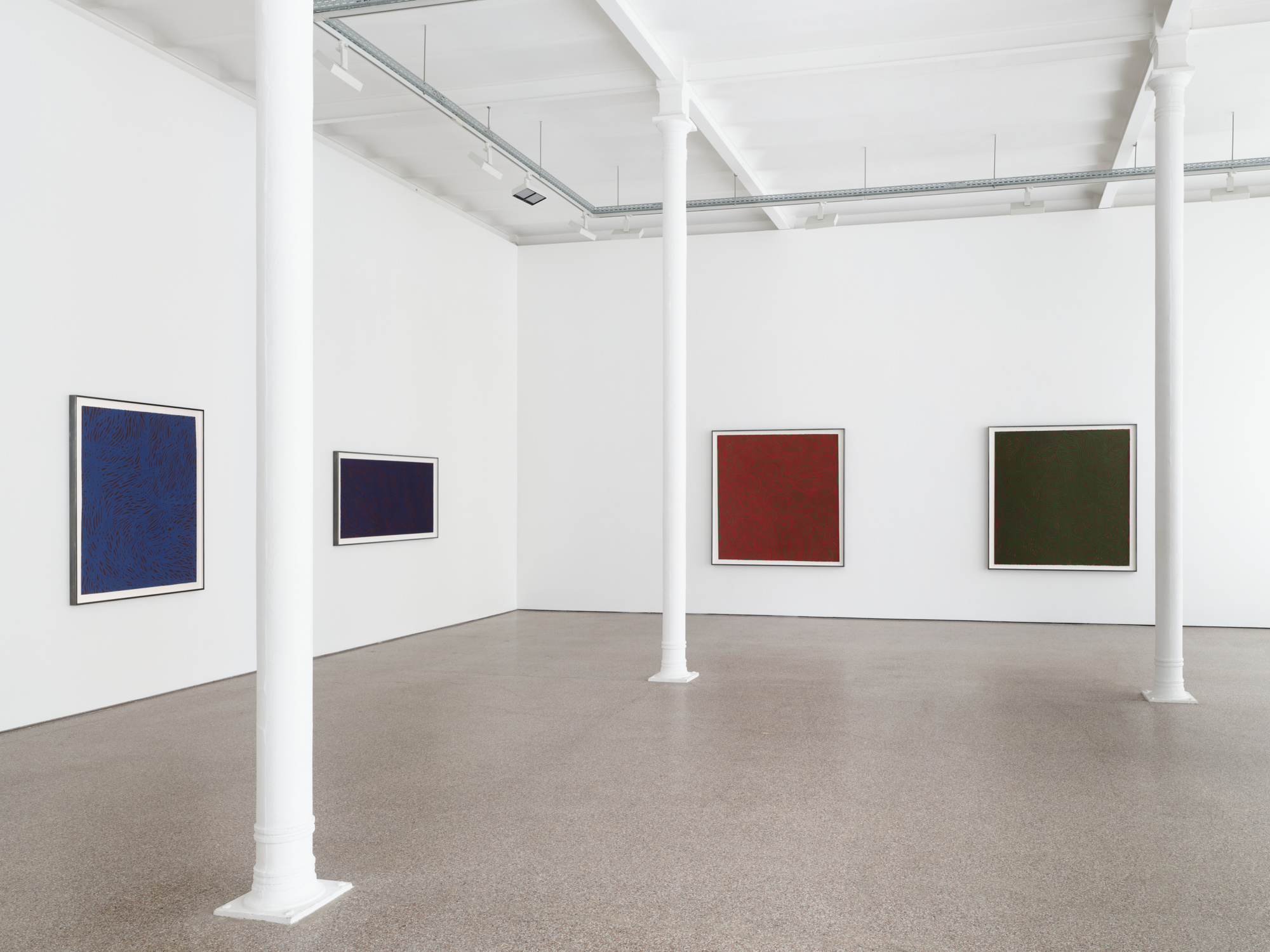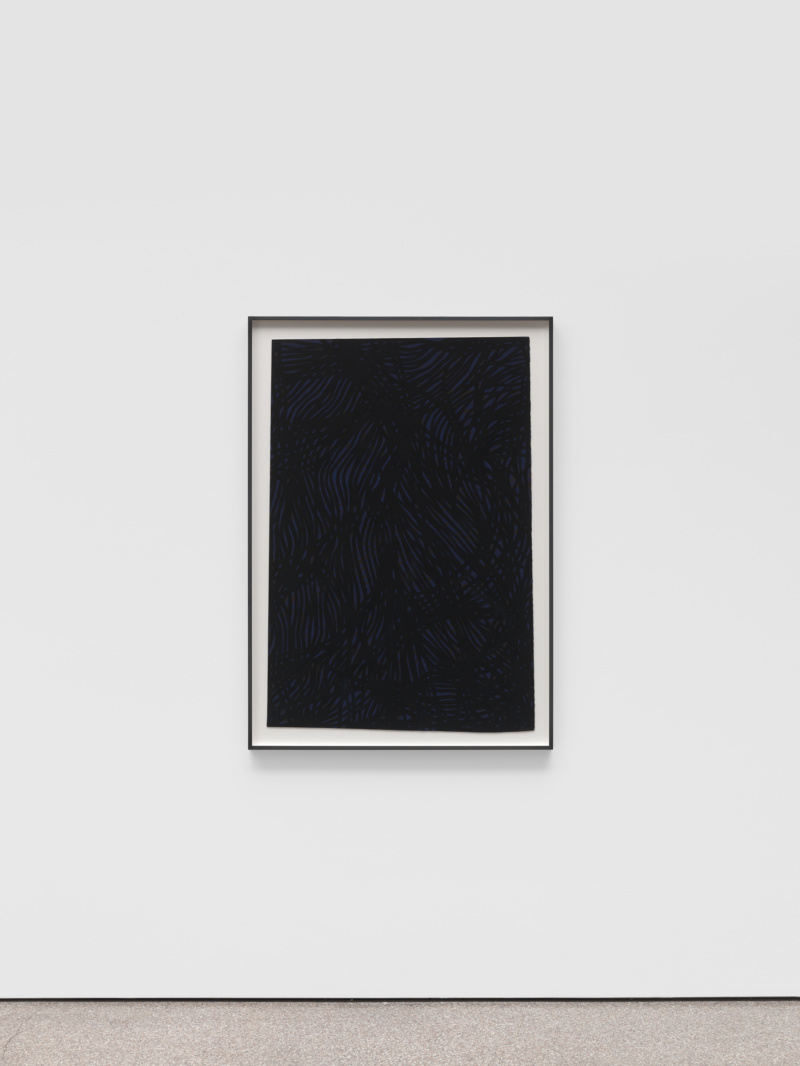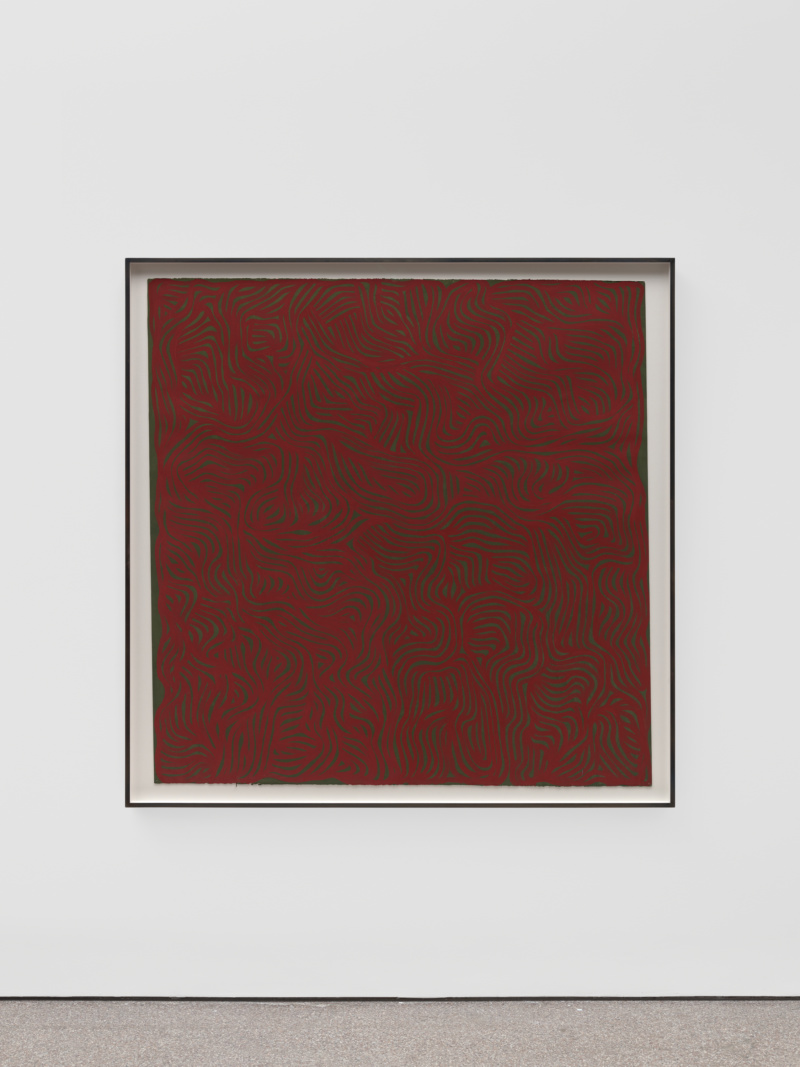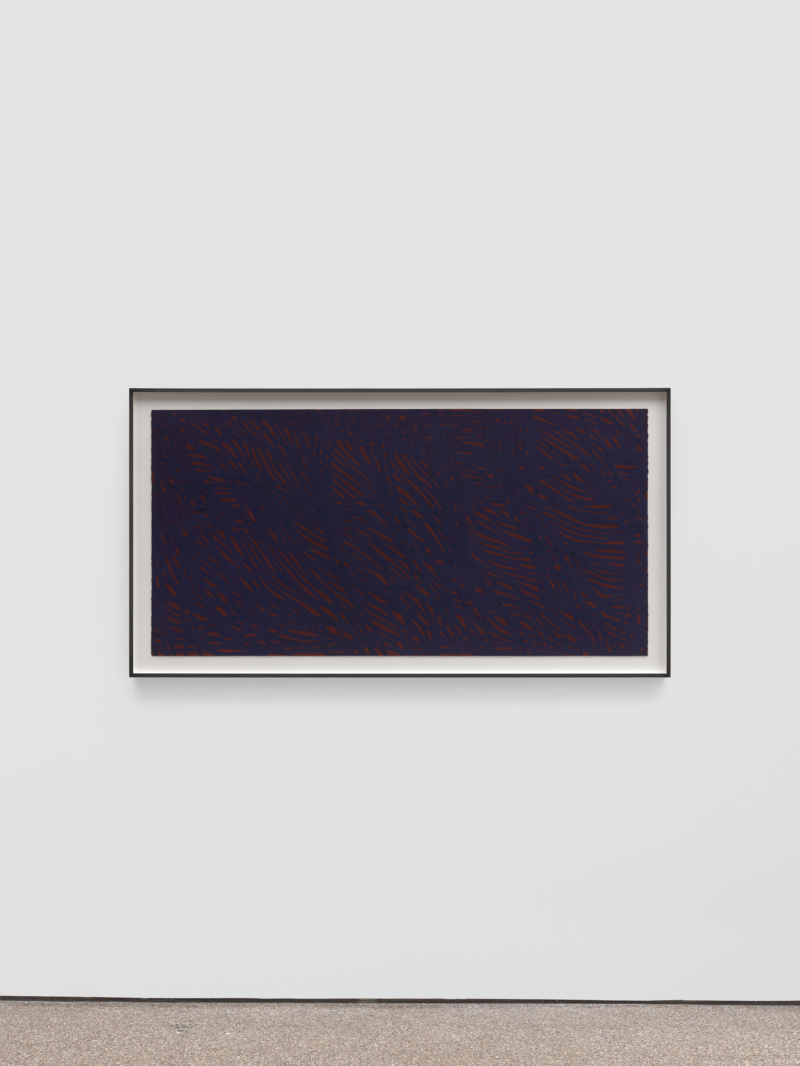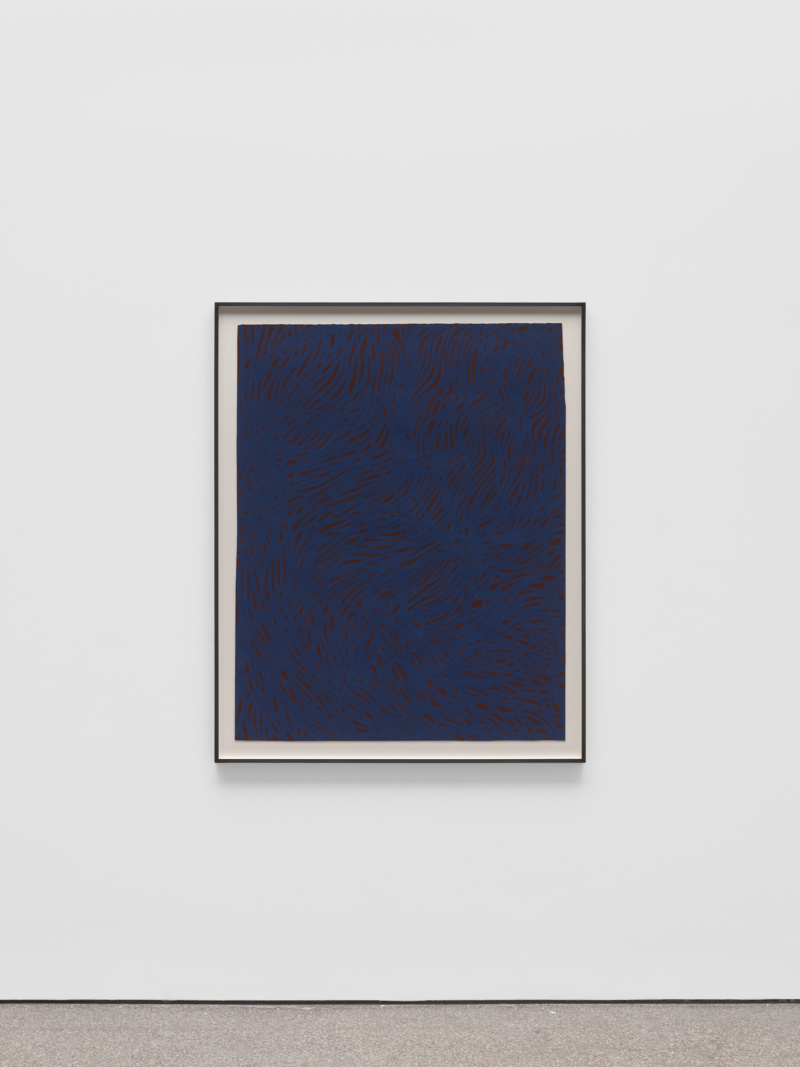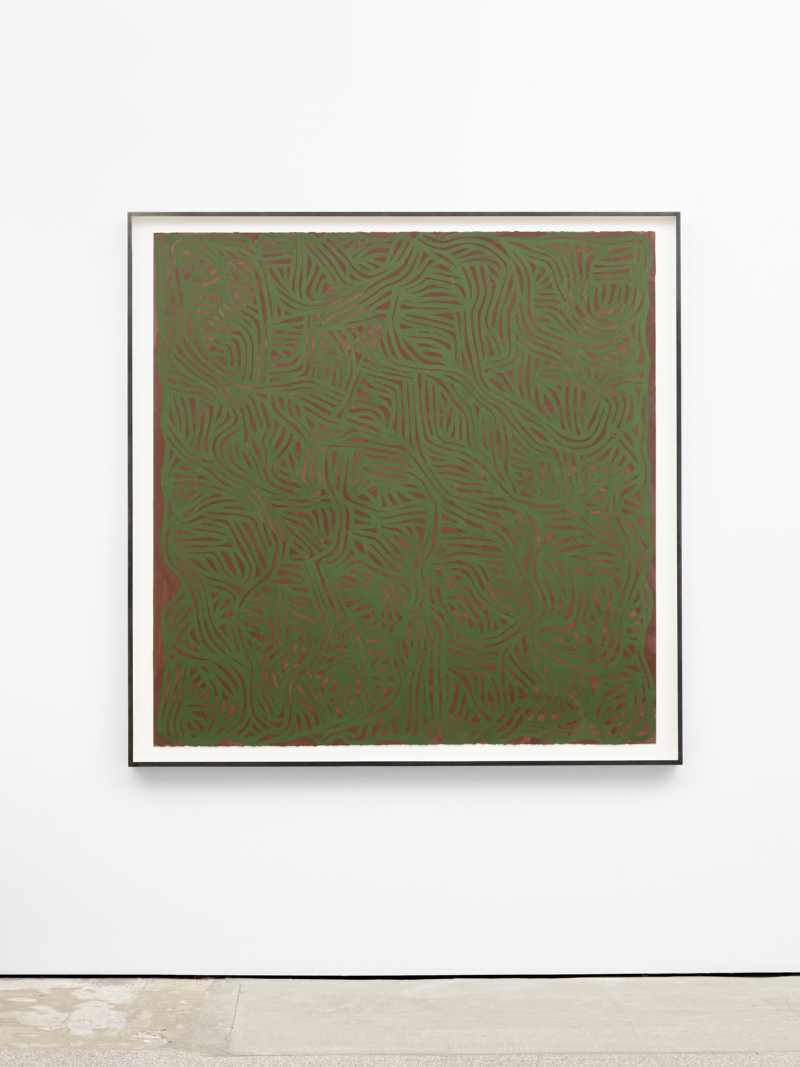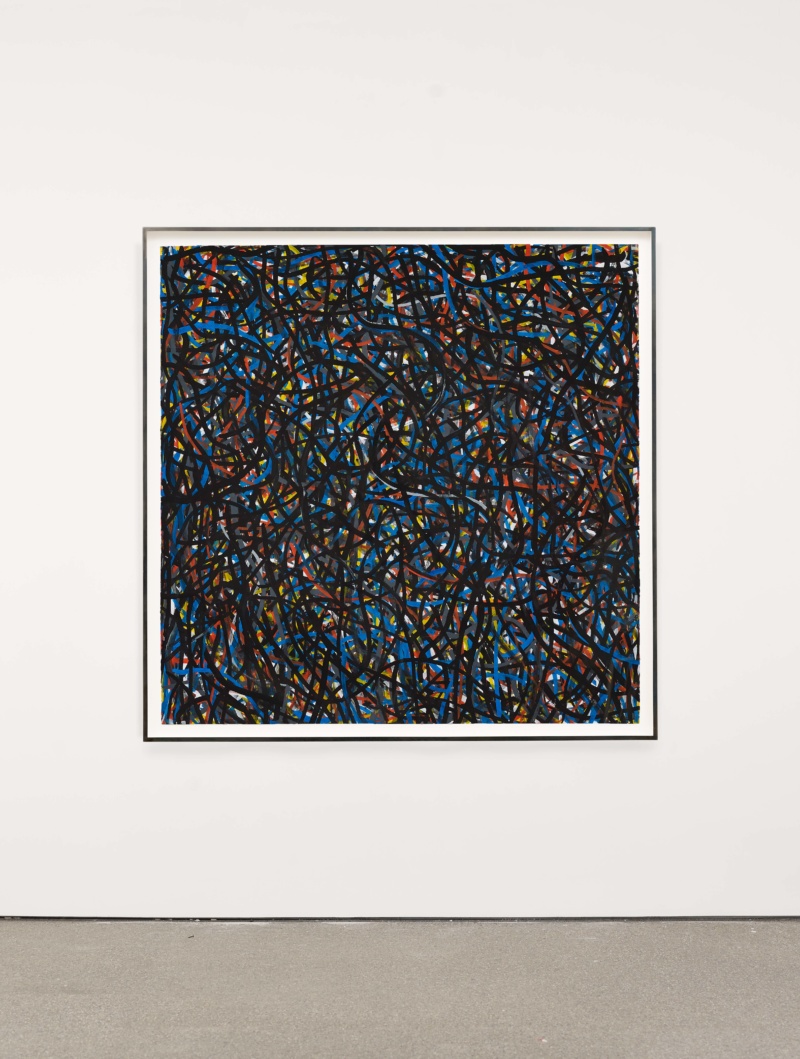Galerie Greta Meert is delighted to present the historical exhibition titled Bands, Curves and Brushstrokes by American artist Sol LeWitt (1928, Hartford, Connecticut — 2007, New York). Between 1996 and 2002, Sol LeWitt created a striking group of works on paper — Parallel Curves, Tangled Bands, Irregular Curves and Not Straight Brushstrokes. They mark a shift within his practice: away from the reductive logic of Minimalism and Conceptualism toward something more tactile, sensual and immediate. Long associated with systems, modules, and instructions, here LeWitt embraces irregularity, gesture, and colour. These works, while modest in scale compared to his wall drawings, carry an intimate energy, rewarding close looking with a wealth of texture, density, and surface articulation.
LeWitt’s early statements, particularly his 1967 “Paragraphs on Conceptual Art,” established his reputation as a thinker of systems. He argued that the idea, not the execution, constituted the work of art. His structures and wall drawings from the 1960s and 70s reflected this ethos: they were modular, systematic, and could be executed by others following precise instructions. The focus was on concept and process, while the artist himself receded behind a framework of rules.
By the 1990s, however, his practice had entered another register. These late works on paper do not abandon systemic thinking, but they allow space for irregularity, sensuous colour, and the immediacy of the mark. They suggest not an opposition to his conceptual past but an expansion — an exploration of how repetition and logic can coexist with touch, warmth, and unpredictability.
In the series Parallel Curves, sets of bending lines extend across the paper in rhythmic formations. The logic is simple, curves repeated in parallel, but the effect is surprisingly alive. Their proximity creates vibrations, almost optical pulsations, recalling moiré patterns or the undulating rhythm of vaulted architecture. If LeWitt’s earlier grids aspired to neutrality, here the hand re-enters: the curves are supple, carrying a softness that resists mechanical precision. Colour is restrained, yet the structures resonate spatially, suggesting both architectural arches and musical phrasing. System and sensuality meet in a balance of rigour and rhythm.
Tangled Bands pushes further into colour’s intensity. Broad ribbons of saturated hues knot and overlap, creating dense, interwoven fields. Unlike the measured logic of Parallel Curves, these compositions lean toward exuberance. The bands proliferate, entangling themselves into webs that recall textiles, infrastructural networks, or architectural scaffolding seen in collapse and renewal. Colour here is unapologetically bold: radiant primaries and secondaries jostle for dominance, transforming the flat sheet into a radiant, almost stained-glass-like surface. Where Minimalism once muted colour, LeWitt now embraces its sensual force, using it to activate both surface and space.
With Irregular Curves, LeWitt confronts the imperfections of gesture directly. The drawings are composed of overlapping marks, applied with a deliberate lack of uniformity. Each stroke differs in weight, length, and direction, building a dense, shifting field. At close range, the tactility of the paper becomes crucial: colour pools, overlaps, and clumps, creating textures that recall geological strata or organic growth. The strokes resist systematisation; they are records of immediacy, layered until coherence emerges through accumulation rather than preordained structure. Colour, often raw and primary, refuses harmony, producing tensions that remain active on the surface.
The most liberated of the four series, Not Straight Brushstrokes, declares its freedom in its title. The works are filled with broad, crooked marks, layered until the sheet becomes a field of pulsating density. Unlike his early instructions, these drawings cannot be reduced to a replicable formula. Their insistence on imperfection, on the bodily rhythm of brushwork, introduces a sensuous undertone rarely associated with LeWitt’s name. Yet even here, repetition remains: the strokes cover the page systematically, creating an all-over composition that nods to Abstract Expressionism while maintaining LeWitt’s commitment to structure. The difference lies in emphasis: these are not depersonalised systems but vibrant, gestural surfaces animated by colour.
Seen together, these four series reveal LeWitt exploring the intimate possibilities of drawing. While his wall works command a monumental presence, these pages invite a more intimate kind of engagement Their intimacy lies not in size but in detail: the layering of marks, the subtleties of colour, the textures that emerge from material contact. They feel almost private, less declarations for public space than records of an artist indulging the pleasures of colour, surface, and movement.
The works on paper from 1996 to 2002 show LeWitt evolving beyond the rigid Minimalism with which he is often identified. These pieces remain grounded in repetition and systemic thinking, yet they open onto tactility, sensual colour, and gestural immediacy. They resonate architecturally — curves, bands, and strokes forming spatial suggestions — while insisting on the intimate, private energy of drawing. In them, LeWitt demonstrates that conceptual clarity need not preclude sensual vitality, and that even within a system, colour and gesture can thrive.
